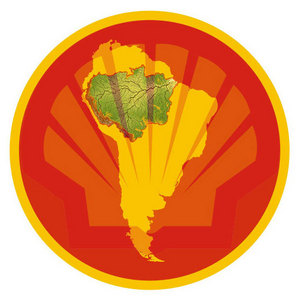This is an archive of the ArtCat Zine, 2007-2009. Please visit our new project, IDIOM.
Some True Stories at the Storefront for Art and Architecture
Some True Stories:
researches in the field of flexible truth
Storefront for Art and Architecture - 97 Kenmare Street, New York NY
18 November 2008 - 23 December 2008
There’s always something disconcerting about going to an exhibition at the Storefront for Art and Architecture. Perhaps it’s the fact that entering the Storefront feels like walking into a vertical jigsaw puzzle, or, that once inside, the gallery’s shallow floor space and antiseptic design create the impression of being inside the spaceship in 2001. Whatever the reason, this sense of disorientation lends itself well to “Some True Stories: researches in the field of flexible truth,” currently on view at the Storefront. “Some True Stories” is a multimedia installation orchestrated by ten architects – including at least one who moonlights in the Bon Savants – working under the direction of Yale architect and theorist Keller Easterling. Encompassing the genres of theater, globalization, network theory and literature, Easterling's work is oriented around expanding the traditional definition of architecture, and doing so through an eye to the idiosyncratic. Her most recent book, Enduring Innocence, included chapters on North Korean tourist infrastructures, agricultural urbanism and 21st century pirates — topics that reflect Easterling’s intent to develop a more inclusive architecture along political and geographic axes.
In Twilight of the Idols, Friedrich Nietzsche wrote that “the most powerful men have always inspired the architects; the architect has always been influenced by power,” and it is with this sentiment that Easterling's press release seems to resound. The show employs the notion of the hoax – taking form here as commercial design – to attractively present fiction as fact and call into relief architecture’s sociopolitical implications. Masquerading as advertisement, the exhibition draws attention to architects' role as arbiters of space, converting useless or unwanted sites into desirable ones, and for better or worse, drawing everything they touch into the global economy.
Upon entering the Storefront, the visitor is immediately greeted with a series of sleek Shell Oil-style ads proudly featuring "VPL," a fictitious company promoting a high-speed railway line between three California airports. These ads, the work of Rustam Mehta and Thom Moran, pair the "jargon of complexity theory and the business model of Las Vegas casinos" in the service of selling the railroad and promoting an industrial/residential campus in the desert between the airports. "Part airport city, part casino and part suburb," the press release reads, transforming a formerly barren space into a paradigm for hyperconnected 21st century living.
Behind the VPL ads, the back wall is covered with a piece by Easterling and Mwangi Gathinji simply entitled Cable, which overlays a pixilated map of Africa with plans for a fiber optic cable network. Inverting the common model of outsourcing as a means of exploitation, this project recasts outsourcing around infrastructure development, aligning it with the potential for economic and political mobilization. “East Africa,” one of the blurbs read, “is already being considered the new ‘best kept secret’ in global offshoring.” By considering technology's ability to collapse temporal-spatial barriers as a form of urbanism, Easterling and Gathinji frame broadband within a spatial vocabulary and highlight its potential to catalyze equitable growth. Capitalism, the artists sarcastically contend, can be a means of reversing oppressive developmental trends as well as a way of perpetrating them.
In its deployment of hoax, Some True Stories, follows the same trajectory as the Yes Men’s already infamous New York Times prank last month: authority is assumed and subverted in order to reveal the dynamics of power. But while the Yes Men envisioned a sardonically liberal utopian future to suggest that we live in the worst of all possible worlds, Easterling takes an opposing approach, proposing a series of plausible projects that reflect architecture's capacity to change physical and psychological landscapes, transforming not only structures, but also how we conceptualize space. Like politics, architecture's core is speculative, propagating itself through realizing stories that have yet to fully exist. “Architecture and urbanism,” Easterling writes, “contribute many wrong stories to the mix as they move headlong into the world, propagating forms of polity faster than proper political channels can legislate them.” In Some True Stories, each artist is an unreliable narrator, thriving on the delicate boundary between misinformation and truth.
Commenting on the desire for sincerity in creative work, Nabokov once said that “art at its greatest is fantastically deceitful and complex.” While the thought certainly reflects the driving force behind Some True Stories, the artists also propose an amendment: art may be deceitful at its best, but reality remains deceitful at its worst. Through contorting the distinction between art and reality, "Some True Stories" makes one thing especially clear: in a brave new world of malleable truths and lipsticked pigs, perhaps the biggest ruse is to suggest that any difference exists at all."
ZINE
HOME
TIPS / COMMENTS
CATEGORIES
CONTRIBUTORS
- Greg Afinogenov
- B. Blagojevic
- Adda Birnir
- Susannah Edelbaum
- Julie Fishkin
- Paddy Johnson
- Jessica Loudis
- Christopher Reiger
- Andrew Robinson
- Peter J. Russo
- Blythe Sheldon
- S.C.Squibb
- Hrag Vartanian

